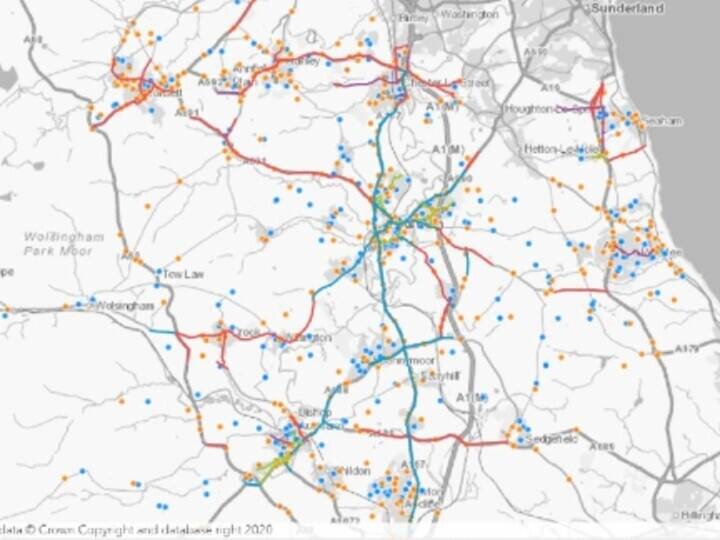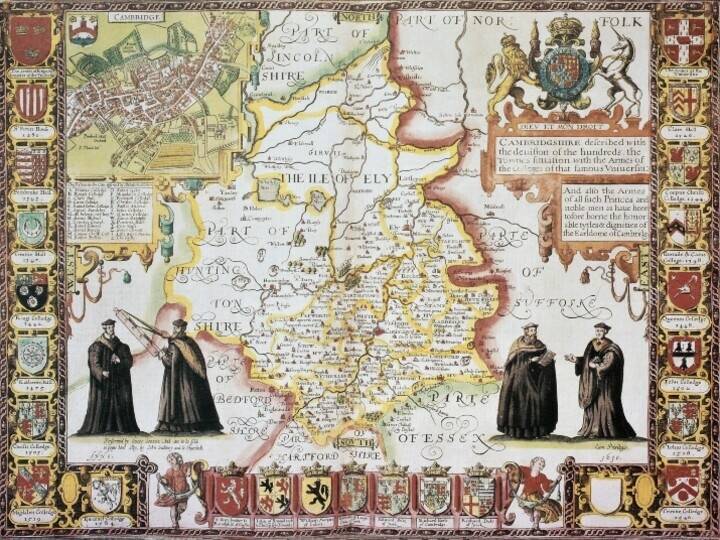Exemplar Award Winner- Runner-up National Gazetteers Citizen Award 2011: Dartford Borough Council
When a major planning application revealed just how much the citizens of Dartford valued their Edwardian park, the council decided to review how accessible it was to the community.
The first task was to find out how many people could make effective use of the park. This was achieved by using the LSG to create a 1 km walking route buffer zone based on each of the park’s main entrances. Using the LLPG, it was then possible to determine how many residential properties lay within walking distance of the park.
250 additional properties, which were at the street naming and numbering stage, were counted and fell into the park access zone. Since the council had recognised the potential to expand the park by acquiring some land bordering its east side, it could then investigate ways of improving access and integrating the new open space. A number of different scenarios were tested using ‘walk shed’ analysis to see how link bridges and pedestrian tunnels might improve access. These would effectively make the park easier to walk to for a much wider range of properties. This analysis was based on data from the LSG.
Some rudimentary Census analysis was then undertaken to provide an insight into the make-up of the local population, in order to see if the measures taken to improve access were likely to prove popular. This initial work persuaded the council to pursue a number of competitive bids for improvement funding with government agencies, each underpinned by quantifiable data provided by the LSG and LLPG.
The aims of the project were twofold: firstly, to improve access to and from the town and nearby countryside, including the renowned Darent Valley Path; and, secondly, to restore or improve the park facilities themselves. Out of these two main aims came a number of objectives focused on specific projects which became the subject of the funding bids. These included reconnecting two main elements of the park split by the building of a road in the 1930s, and improving links from the park to the Darent Valley, with significant benefits for pedestrians and cyclists alike. Inside the park, plans were made for a number of new facilities and protected areas.
Outcomes
The bids were ultimately successful in securing millions of pounds of funding which, over the last three years, has seen the Dartford Greenheart Project deliver numerous improvements. These include link bridges and tunnels, a skate park, a children’s water play area, a new bandstand and outdoor fitness equipment, plus a new visitor centre and café.
Local residents have begun to use the links that the park facilitates across the town, providing faster, safer walking and cycling routes whilst also opening up access to other green spaces around the town.
The project has provided the citizens of Dartford with a park that has been restored to its Edwardian splendour and enhanced with modern day facilities and attractions suitable for all age ranges. It has become a focal point for the local community and home to band and carol concerts which have proved hugely popular. In the first summer of trading, the visitor centre and café exceeded expectations. It is estimated that the park now receives over 50,000 visitors per year.
Key benefits
• a restored park with much better facilities for exercise and relaxation, now used by many more citizens, providing a focal point for the local community
• increased footfall in and through the park improves connectivity with the town and the country beyond, satisfying town centre policy for urban pathways
• an increased revenue stream for the council derived from the visitor centre, café and hire of the bandstand
• local businesses benefit from increased opportunities facilitated by the ‘draw’ of the park
• safer walking and cycling routes, some on the way to schools, which help to meet Government ‘Healthy Living Goals’
• more opportunities for wildlife and plants to thrive which in turn lead to increased biodiversity in the heart of the town
• close partnership working i.e. Sustrans for cycle routes that cross the park and join the Darent Valley Path without the need to cross a road
• the project has won two awards which recognise both the benefits derived by the community and engineering excellence.
View from the authority
“Since the Closing the Gap framework was introduced, we have developed a better understanding of where our deprived communities are, and gained an understanding of their multiple and interconnected problems. However, this is not just a ‘project’: it is actively changing the way we make decisions and plan for the future, ensuring we deliver the right services, in the right places and to the right people.”
-Katherine Fairclough Assistant Chief Executive, Warrington Borough Council



